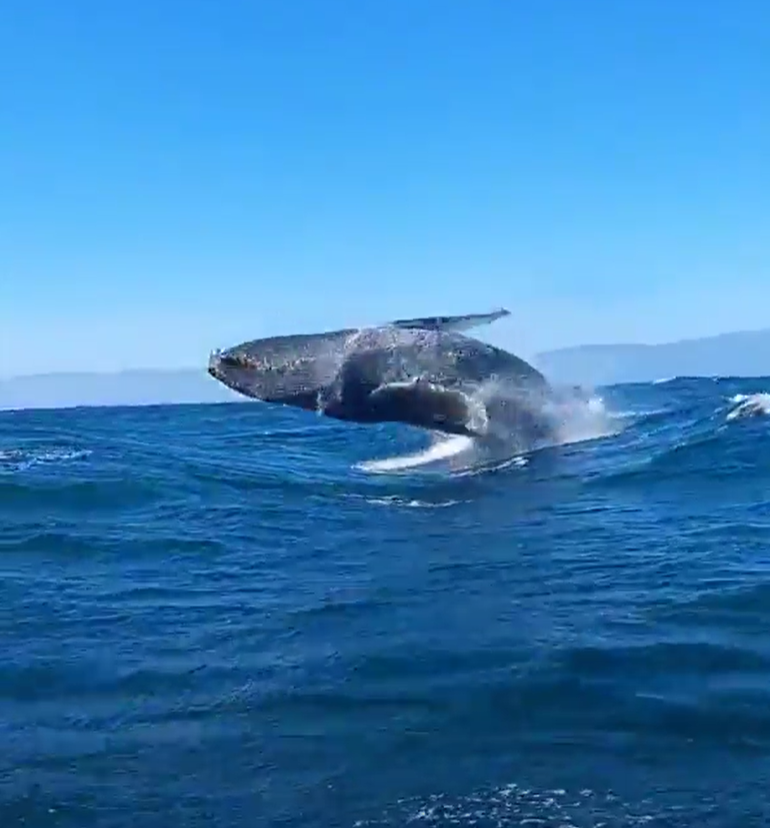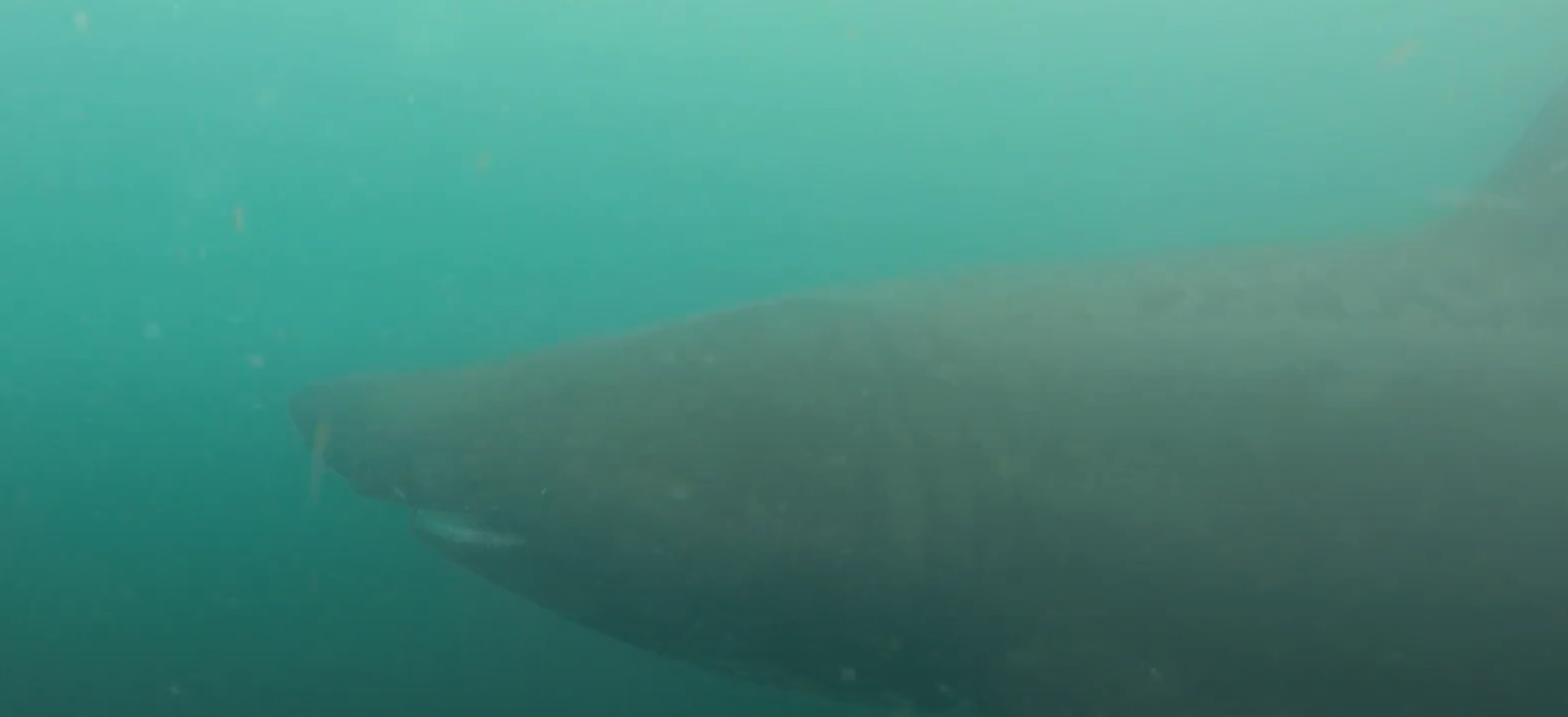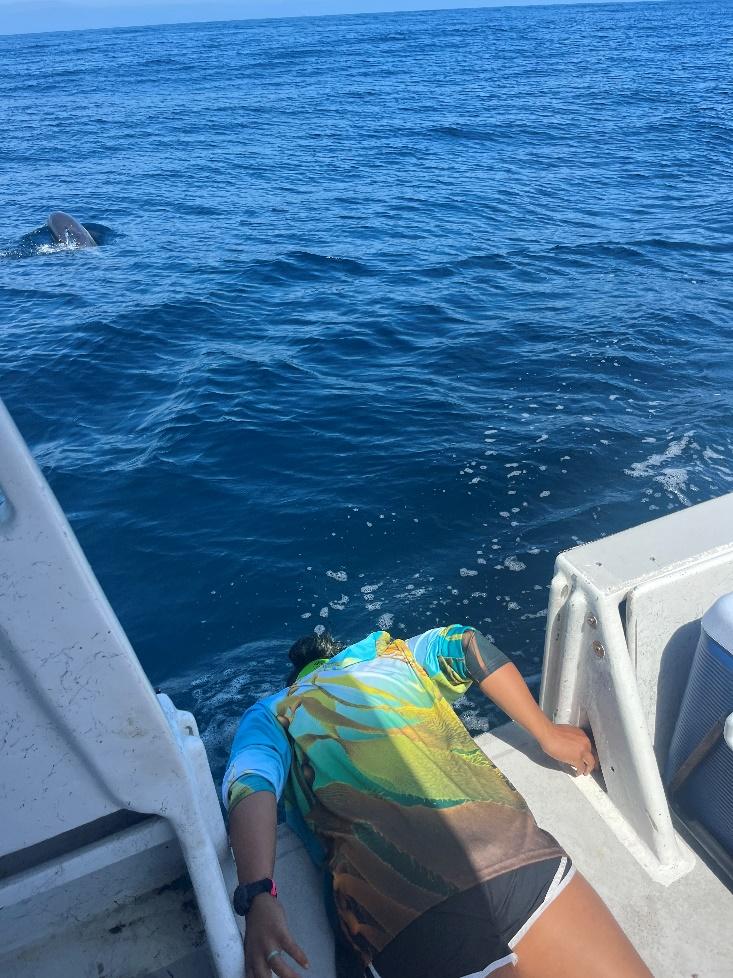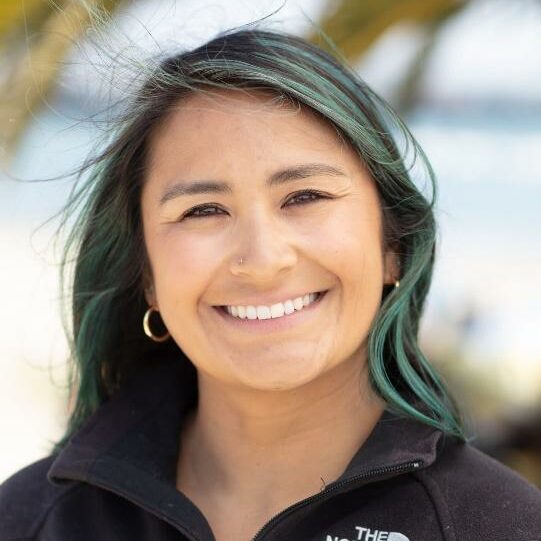by Frankie Puerzer of SBC LTER
Transit between sites is always an opportunity to see amazing wildlife. Here are three of my most memorable wildlife encounters I’ve had in the channel while working for SBC LTER:
“I think I see a whale!”

Credit: Frankie Puerzer, CC BY-SA 4.0.
There’s always a chance you’ll see something amazing when you cross the Santa Barbara Channel. A few months ago, on a particularly windy and chaotic crossing back from a long day of diving at Santa Cruz Island, graduate student Billie Beckley at the helm said, “I think I see a whale!”
Sure enough, a couple hundred yards ahead of the boat, amidst the spray of white-water, chop and wind, a humpback whale breached. We slowed the boat and waited, sure enough 20-30 seconds later it breached again. Over the course of the next 15 minutes, we saw the same whale breach every 20 seconds to a minute. It was one of the most insane whale encounters I had ever experienced. Every time it launched its massive body out of the water and came crashing down, we squealed with joy and excitement.
“Is that a shark?”
Fully wet suited up and moving from Isla Vista to Mohawk Reef, we were boating just offshore from UCSB’s Campus Point when technician, Brandon Doheny, pointed and said, “Is that a shark?!” There were three massive dorsal fins circling around an area. Moments later as we slowly approached one of the slow-moving fins, we realized we were right next to a 21 ft basking shark!

Credit: Frankie Puerzer, CC BY-SA 4.0.
It was luck that I had any battery left in my GoPro at the bottom of my backpack. I grabbed it as quickly as I could and graduate student, Jessica Madden, and I hopped in the water. While Brandon live boated nearby, Jessica and I slowly swam towards the fin that was feet in front of us. My heart was racing with anticipation as out of the green appeared a massive dark figure. You could hear my screams through my snorkel as I got right up next to such a large and wild animal. The texture and patterns on the shark were not anything like what I expected. It moved slowly forward, mouth agape.
“We’ll call it door-keling”

Credit: Melissa Johnson, CC BY-SA 4.0.
Bringing interns and visitors on boat trips when we can is always a highlight of the summer season. Last summer on our way back from the islands, we had a local photographer and a visiting high school student on our boat. Up ahead, our lead PI, Robert Miller, noticed a massive pod of dolphins. We motored in the direction of the pod’s path and found ourselves quickly surrounded in all directions. I killed the engine and grabbed my dive mask. Fully clothed, I donned my mask, took out the diver door, laid on the deck, and stuck my head in the water. There were hundreds of dolphins under and around the boat. The water was so blue and clear, and I could hear them all!
I popped up my head and passed my mask to the photographer and said, “Put this on and get your head in there – we’ll call it door-keling (door snorkeling)!” The photographer and high school student were happy to have an opportunity to witness such a large pod below the surface.
It’s not always like this going to different sites and boating around our channel. I would even say most of the time it is not like this. But for the rare encounters we get to see below the surface, it is absolutely worth sticking your face in the water.

Credit: Emily Hart-Roberts, used with permission.
Frankie Puerzer is an Assistant Specialist in the Miller Lab. She runs field operations, manages the lab and supervises undergraduate interns and visiting students. When she’s not underwater diving for research or fun, she’s on the surface paddling, kiting or surfing. For more lab related images and content contact her on the lab Instagram @scb_mbon or email fpuerzer@ucsb.edu.










